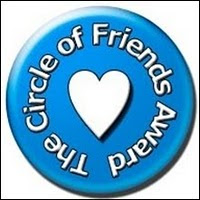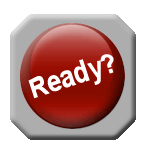Having just picked up Sammy, our new puppy, at the end of last month, my mind is focused on puppies and puppy training. So when I was in our local Borders and saw that Dawn Sylvia-Stasiewicz, with her new book, ‘The Love Your Dog Training Program ,’ was coming for a book signing and discussion, my interest was piqued!
,’ was coming for a book signing and discussion, my interest was piqued!
Here is a synopsis of this very practical book:
Dawn Sylvia-Stasiewicz is a very special dog trainer, a woman who knows dogs instinctively. A mother of three and a dog trainer for more than two decades, Sylvia-Stasiewicz draws on lessons she learned from raising her children, and here is her proven program of positive reinforcement—a program whose central tenet is to love, respect, and teach our dogs just as we would our children.
Step by step, The Love That Dog Training Program takes readers through the fundamentals of what a dog new to the family needs to know to:
takes readers through the fundamentals of what a dog new to the family needs to know to:
· Feel comfortable and safe in the crate
· Be potty-trained, with a minimum of accidents after just a few weeks
· Develop a “soft mouth” through proper hand-feeding protocol
· Walk without pulling—teaching you the “Be a Tree” habit
· Learn verbal cues and basic commands, like sit and stay.
The author’s intuitive, positive system of reward and punishment will be a revelation to anyone who’s heard that dogs respond only to physical intimidation or other forms of aggressive alpha-dog behavior. Yes, you need to be the master, and your dog needs to know that. But The Love That Dog Training Program gets you there in a much more humane and effective way.
Building on the bonds created in basic training, the program continues with more advanced goals. It shows how to solve common behavioral problems, including house-soiling, chewing, digging, jumping, and ankle-biting. It shows how to make your dog more comfortable in the world, from curing noise phobias to learning dog park etiquette and dealing with strangers. And it shows how you can train your dog to perform some rudimentary tricks—Rollover, catch a Frisbee, High Five. And then you’re well on your way to a lifetime of loving, joyful companionship.
Here are the biographies of the authors:
Before becoming the dog trainer to President Obama’s family, Dawn Sylvia-Stasiewicz trained each of Senator Ted Kennedy’s Portugese Water Dogs. Sylvia-Stasiewicz, who has been a professional dog trainer in the Washington D.C./Northern Virginia area for more than 20 years, runs popular Merit Puppy dog training classes and trains and boards animals for the Washington elite. She brings a mom’s approach to training, basing her work on theories of positive reinforcement. Dawn's Merit Puppy training website is www.meritpuppy.com.
Larry Kay, a Los Angeles-based writer, is a Contributing Editor for Dog Fancy magazine. He created Animal Wow's Dogs Wow Dogs DVD, which has become the most award-winning dog care DVD for kids, and is Editorial Director for two Animal Wow blogs: "When Kids Discover Pets" for families and "Stately Sniffs the Web" for kids. His writing credits include PBS documentaries, educational films for the New York City Board of Education, and children's edutainment software for Disney and The Muppets. Larry's Animal Wow website is www.animalwow.com.
Here is Dawn explaining the five key training techniques that she uses with all of the dogs she trains:
I love how Dawn explains her approach to dog training:
Unlike the traditional training programs currently in vogue, such as the one Cesar Millan uses in the Dog Whisperer series, positive reinforcement training holds at its core that dogs learn good behavior by being rewarded for doing well, and that punishment doesn’t have to come in the form of a reprimand or, worse, physical force. In positive reinforcement training, our job is to love and respect our dogs and to reward and punish them the way we would our children. In positive reinforcement, the bottom line is that a dog is a living, breathing creation of God that desires love and security. A dog feels pain, just as we do, and it is our job to minimize that pain.
In my professional judgment, positive reinforcement is the best dog training system, whether you are in a family with many children or a single adult. Right now, far too many dogs are being subjected to more traditional, punishing training techniques, including the use of choke collars and physical force. Those aversive punishment techniques focus on the “bad” things a dog does, leaving a dog to try to figure out, through trial and error, what he must do in order not to be punished. As you read, I used to practice those traditional training methods – until I had a moment of epiphany: Positive reinforcement is better all around. (pp. 3-4)
I also loved this explanation:
I also believe that dog training makes all of us better humans; it can certainly help us instill good values in our children. When your involve your children in training, as I hope you will, not only are you helping your dog to enjoy children, you are teaching your children about safety, responsibility, caring, and what it takes to be a best friend.
Finally…training is one of the best ways to bond with our dogs. If you’ve been the owner of a pet with which you’ve felt exceptionally bonded, you know that this type of relationship brings countless rewards. (p. 5)
I am using this technique with great success (with a few accidents along the way…):
After you take your dog to what will become her designated potty spot, say the word you want to associate with going potty in an upbeat way, such as “Boz, go peeps, go poops,” or simply “go potty.” As she does her business, praise her along of lines of “good pee” or “good poo” or “good potty” in a calm tone so that you don’t distract her, and then give her a treat immediately afterward. Your puppy will learn to associate the potty area with the rewards you will give her for each success, and she will begin to look forward to being rewarded for doing her business in “her” area. Other trainers like to use the cue “do your business,” paired with the reward praise “good business.” Some people get creative when naming the potty cue; one colleague named the dog’s potty cue after an ex-spouse (he eventually grew tired of having to explain this joke and needed to teach his dog a new cue). Whatever you name the cue, say it the same way every time, and realize that your dog may learn the verbal cue long after having learned the physical potty ritual. (pp. 56-57)
I was amused to learn that I am not the only one to use the word “peep”!
One of the most difficult issues we are dealing with is Sammy’s biting. He enjoys biting his mommy’s wrist and his sister’s long floppy Cocker Spaniel ears. So I was drawn to the section on ‘Bite Inhibition, Handling, and Gentling.’ Here is some advice that I really needed to read:
Start bite inhibition training by sitting down with your puppy and putting a finger or hand in his mouth. Say it loud enough so that your puppy gets the message, but so not loud that it frightens him. Let your hand go limp; do not pull it out of your puppy’s mouth. When his bite slackens, say “good dog.” Another technique is to tether your dog to a doorknob while your touch his mouth; if he bites, say “ouch” and walk away from him for a moment (Remember, his punishment is that you’ve taken away the reward of playing with you). Keep at this “ouch” exercise, building up to massaging your puppy’s gums and counting his teeth. When he starts to lick your hand, gently praise him. Don’t punish him for biting you, don’t clamp his mouth shut or force your fingers down his throat. In this case, you want your puppy to figure it out. (p. 65)
I am still trying the “ouch” approach – and I have to be careful to dampen my volume, so as not to scare Sammy – but his bites are VERY painful with those milk teeth. He still seems to think that “ouch” means “this is fun!,” but his bites seem to be less severe than they have been. I am being patient with this little fellow!
Dawn explains what should happen when you complete the training:
By the end of this five-week program, I expect that you will begin to notice a wonderful change in your dog. I called this delightful change spiriting, or the process of unlocking your dog’s personality. The words “inspiration” and “spirit” stem from the same root, and I believe that when your spirit your dog, you inspire his best personality traits. In my classes, I get a lot of pleasure from watching that relationship form over the time I work with my students. Sometimes it seems to happen all at once; an owner who has done the homework consistently but hasn’t experienced much success with his dog will come to the last night of class with a suddenly spirited dog. I love it when a dog “gets it” and wants to train. Maybe you’ve seen such a dog that loves to socialize – his owner has taught him how to be successful in our human world. (p. 68)
Before we picked him up, I asked the owner of Sammy’s parents to describe him in one word. He actually gave me two – “feisty” and “happy.” Both words have turned out to be very accurate. Shelby, our six year old, is also very feisty. They have been a lot of good tug-o-war battles in our home over the past few weeks!
One thing that Dawn mentions that I had never considered is to not use your pup’s name when you correct him. I am having difficulty holding to that; I find myself using his name to get his attention. I am sure that will correct over time. Here is how Dawn explains this; it makes a lot of sense:
One important note: Never say your dog’s name when you’re trying to correct her behavior, such as when you tell her to get off the couch, to stop mouthing your hand, or to drop some contraband. For example, while I often say “good Brieo!” I never say “no Brieo, get down,” or “drop that, Brieo!” You don’t want to associate her name with punishment. That can delay bonding and slow the learning process; some dogs may stop responding to their names.
Remember: Use your dog’s name only in the course of praise and reward.
I can almost guarantee that you will make a mistake at some point and call your dog by name in a negative association; everyone, including me, makes that error sometimes. When it happens, make a note to yourself to play a round or two of the Name Game as soon as possible. (p. 79)
Another innovative idea is this way to reward with treats:
An important component of this technique is a reward called jackpots – a virtual puppy bonanza. Instead of rewarding your dog with one treat, you give him 7 to 10, one at a time. (This will feel like a much bigger reward than if he eats them all in one gulp). Be sure to say “good” with extra enthusiasm each time you dole out a treat in the jackpot. Awarding jackpots will increase your dog’s curiosity, self-confidence, and enjoyment of training. Getting 10 treats is fun! (p. 91)
I have read this book cover to cover, and have been using a lot of the advice that Dawn provides. Sammy, who is now ten weeks old, needs all the good direction we can give him! He is making great strides, especially in the biting and house training departments. Shelby has a few bad habits, and I am using the ‘Behavior Problems’ chapter for those. I am very impressed with the techniques that Dawn uses – especially the positive reinforcement aspect of it! I am grateful that this book – and this author – crossed my path at this particular point in time! I did attend Dawn’s discussion and book signing at Borders; here we are together after the signing. It was a valuable time, and I learned a lot from her.
You can order this book here .
.
You can order this book here
This book was published by Workman Publishing Company and provided by them for review and giveaway purposes.
_________________________________________
I have two copies of this book that Stefanie at Workman Press is very generously providing for a giveaway! So there are two books up for grabs!
There are several ways to gain entry:
1) Leave a comment here on the blog, telling me what problem you are having with your dog/puppy; it is pretty well guaranteed that Dawn provides a solution in her book! Please make sure to leave your email address in this format – sample[at]gmail[dot]com.
2) Follow me on Twitter; I will more than likely follow you back! If you are already a Twitter follower, that counts, too! Please leave a new comment to that effect.
3) Follow me as a Google Friend on this blog; if you are already a Friend, that counts, too! Please leave a new comment to that effect.
4) Become my Facebook friend. Please leave a new comment to that effect.
5) Follow this blog as a NetWorked Blog Follower after you’ve become my Facebook friend. Please leave a new comment to that effect.
So there are five chances to enter! Please limit one entry per option, and please include your email address, or, sad to say, the Random Number Generator will have to choose a different winner.
This giveaway is for U.S. residents only. The deadline for entry is Monday, November 29, 2010 at 11:59 p.m. EST. Two winners will be chosen via the Random Number Generator on Tuesday, November 30, 2010 and will be contacted via email. The best to all of you!































.jpg)







17 comments:
I need help controlling my dog in public places.
rachel[dot]flavin[at]gmail[dot]com
I follow on Twitter @rachelflavin
rachel[dot]flavin[at]gmail[dot]com
I follow on Google Friend
rachel[dot]flavin[at]gmail[dot]com
I requested to be your Facebook friend
rachel[dot]flavin[at]gmail[dot]com
My dog is fearful of people and dogs when we walk. He acts aggressive even though he is afraid.
lkish77123 at gmail dot com
My puppy at 8 months is still biting. Nothing we have tried works to curb this in her. She also likes to jump up on you and we have tried numerous tips from a local dog trainer on both and they are not working for her. She was taken away from her mother too soon and maybe that is part of the problem and maybe it is just me. Sure are wondering if there is any hope of these changing in her.
I don't have a dog yet but I plan to and I want to be prepared. I watch a lot of the shows on animal planet about dog training but I want a book that I have on hand to refer to for a problem.
CarolNWong(at)aol(dot)com
I don't have a dog yet but I plan to and I want to be prepared. I watch a lot of the shows on animal planet about dog training but I want a book that I have on hand to refer to for a problem.
CarolNWong(at)aol(dot)com
I don't have a dog yet but I plan to and I want to be prepared. I watch a lot of the shows on animal planet about dog training but I want a book that I have on hand to refer to for a problem.
CarolNWong(at)aol(dot)com
I follow on Twitter too!
CarolNWong(at)aol(dot)com
I follow on Twitter too!
CarolNWong(at)aol(dot)com
We are friends on Facebook. Sorry about the double post for Twitter and the comment. Having trouble with my computer going so slow today!
CarolNWong(at)aol(dot)com
I am now following you on Networked blogs!
CarolNWong(at)aol(dot)com
Please enter me! I would love to read this book. :D
I'm having trouble with my dog peeing in the house. A few other things as well, but that is the main problem.
I don't have a dog yet but I plan to and I want to be prepared. I watch a lot of the shows on animal planet about dog training but I want a book that I have on hand to refer to for a problem... I think the book of ‘The Love That Dog Training Program’ by Dawn Sylvia-Stasiewicz and Larry Kay
or You can read this book too. for details aboutdogsandpets.com
I have an eight-month-old male American Bulldog puppy. I know Bulldogs aren't your breed of preference, but after reading several of your articles, I would very much value your insight. He is a well behaved puppy (sits, comes, etc.) but whenever I take him away from our house, he is terribly shy. He was from a litter of eleven. I met both of his parents, and neither one of them were in the least bit shy. He trembles badly, won't eat treats (especially from strangers) and tucks his tail. At the same time, he appears to be curious of his surroundings. I followed your advice, and took him to Wal -Mart to people watch. A few strangers came by and offered him some hot-dog. He turned up his nose at it! I don't mind some aloofness, as I know it is a trait of the breed, but I sure would like him not to shake and tuck his tail. No stranger has ever done anything to this dog, as I have had him since he was 10 weeks old. As a puppy, any slight change in the house (moving furniture around, loud music,) would send him scurrying to his crate. He seems to have overcome that, though. Do you think he will outgrow this, or am I in for a tough time of it. Also, he is never aggressive, and never pees himself. Any help you can offer would be very much appreciated, as I am getting discouraged and I love my dog very much.
I've been searching the internet and I stumbled upon your website. A lot of the things I've read on it so far sound like what our trainer says and it seems like you really understand and know dogs. My question is, do you agree with our trainer? She says that he is too dangerous to have in our home with our children (ages 9, 4, and 1), that putting him outside would be cruel because he's a pack animal (which I totally agree with), and that giving him away could be dangerous to another owner or even our dog. She also told us that he may never bite us or our children, but if it were her dog, she would have it put down, just because of the possible risk. She said she knew it was hard to hear, and it is ... which is why I'm asking what you would do - would you ever suggest putting a dog down in this type of situation? I would truly value your opinion and appreciate you taking the time to read this and hopefully reply.
Post a Comment